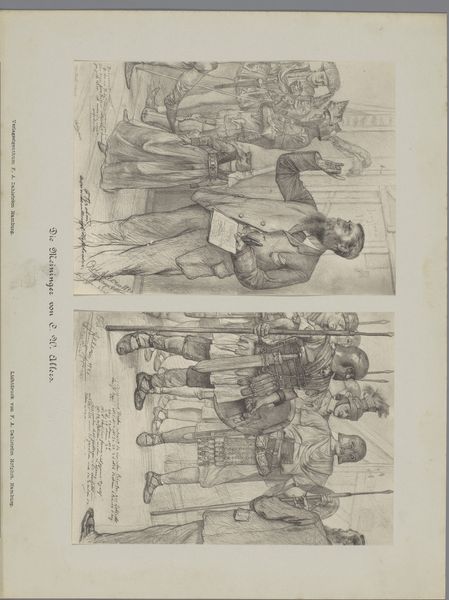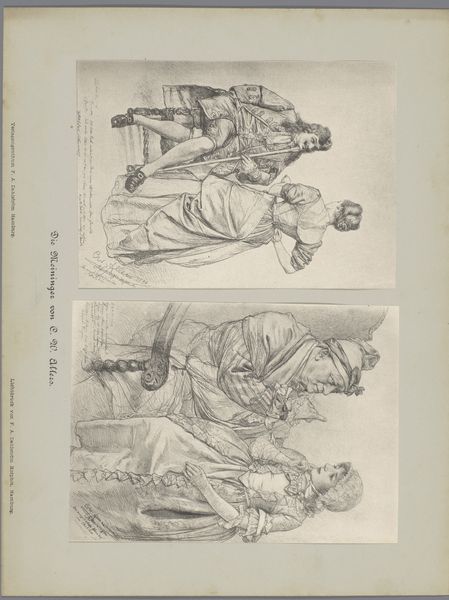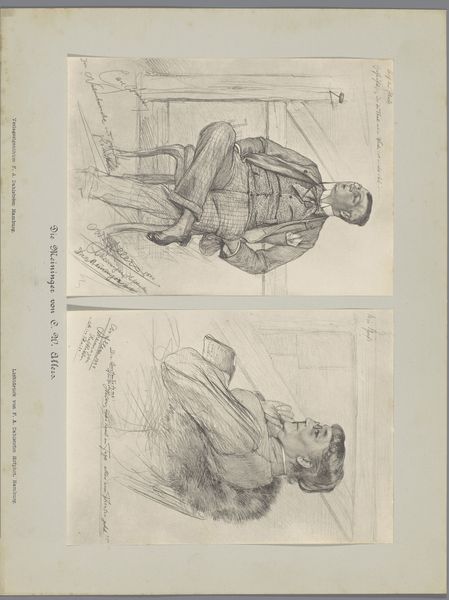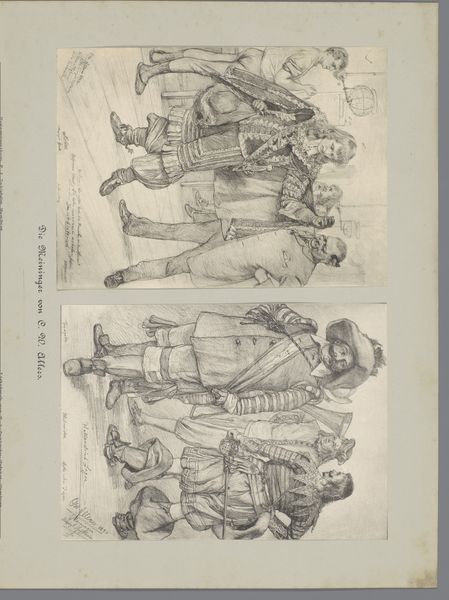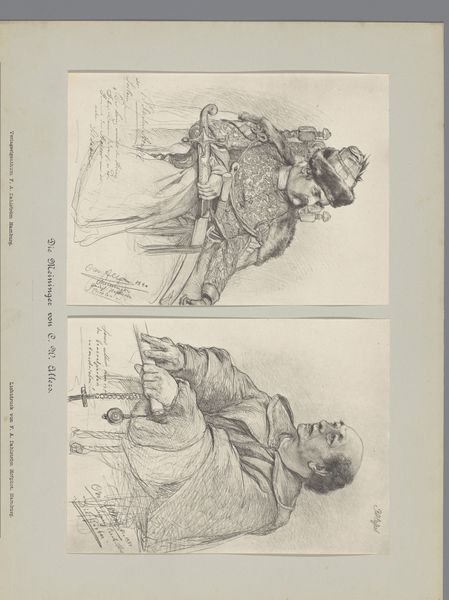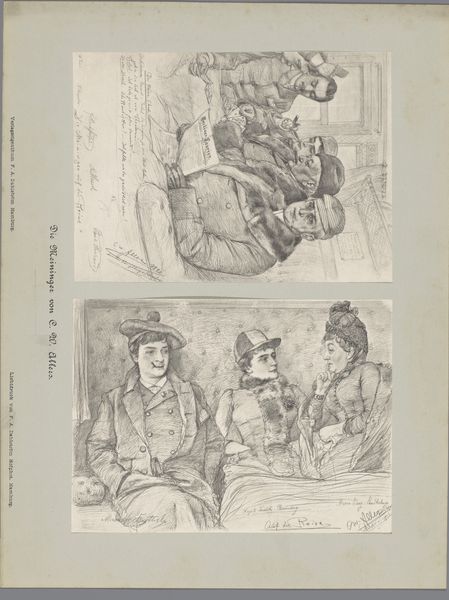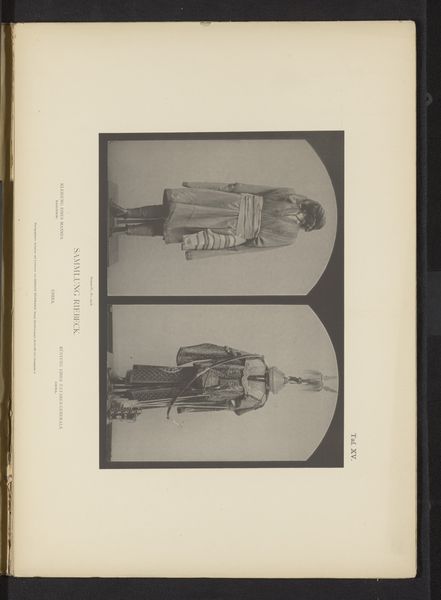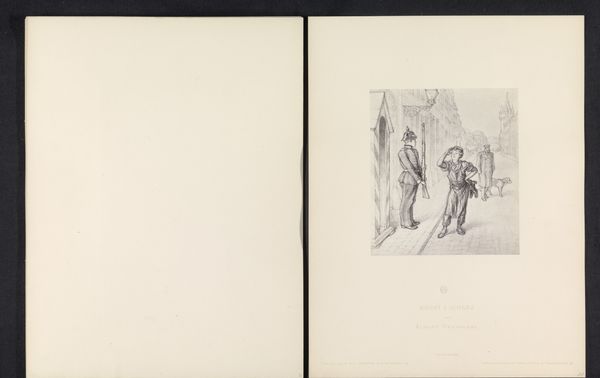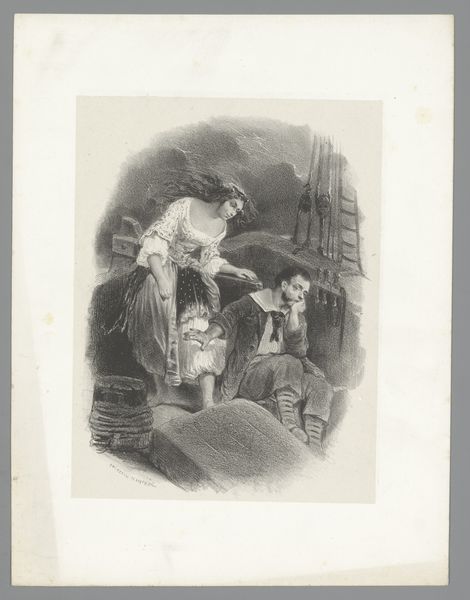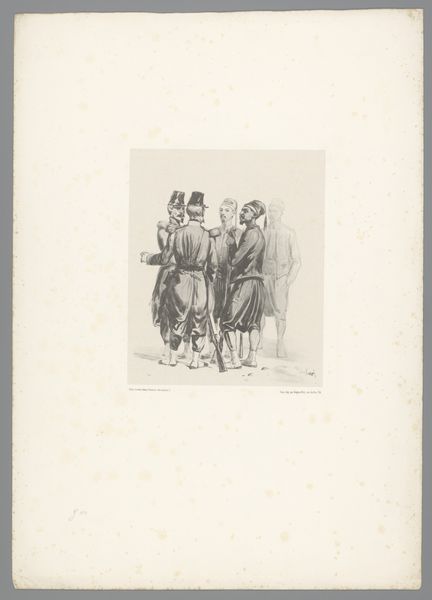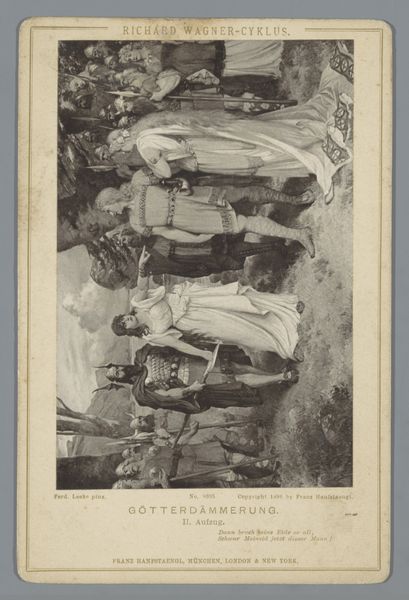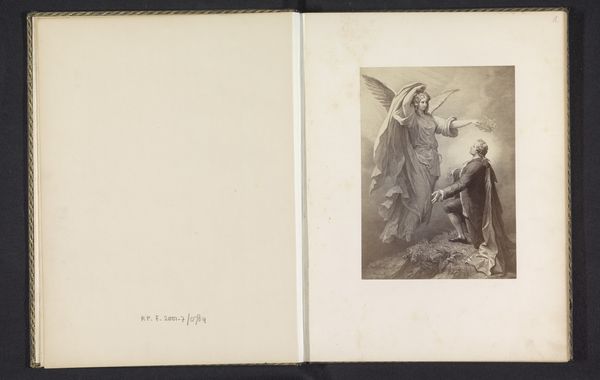
Twee fotoreproducties van tekeningen, voorstellende twee actrices in historisch kostuum en een acteur in historisch kostuum met een beddenpan 1890
0:00
0:00
drawing, paper, pencil
#
drawing
#
paper
#
pencil
#
genre-painting
#
history-painting
#
academic-art
Dimensions: height 237 mm, width 317 mm
Copyright: Rijks Museum: Open Domain
Editor: This drawing by F.A. Dahlström, dated 1890, is interesting! It presents reproductions of drawings made with pencil on paper, featuring figures in what looks like historical costumes. There’s a certain theatricality to it – they seem like actors in a play. What strikes you about this work? Curator: Well, as a materialist, I'm immediately drawn to the drawing as reproduction. This isn't just about aesthetic representation; it speaks to a system of making images accessible to a wider audience. Consider the social context: these are reproductions of drawings, made on paper, likely intended for circulation, perhaps in a journal or book. Editor: So the point is not so much the scene depicted but the purpose for which these drawings were produced? Curator: Exactly! The academic art style tells us something about the art market and its demand for historical and genre scenes. But what’s crucial is thinking about paper as a material – the wood pulp, the labor involved in its production, and its role in disseminating imagery. Pencil, too, a relatively inexpensive and accessible medium, makes artistic production easier. The costuming… can you read any clues about class or other issues from the choice of attire in this image? Editor: They seem fairly upper-class... almost like a historical reenactment for the elite. Maybe highlighting the disparity between the artist’s work on paper for mass consumption, compared to the wealth suggested in the performance represented within it. Curator: Precisely! These reproductive drawings democratize these images. Now, think about the ‘genre’ and ‘history’ painting themes listed… What labor went into that genre of artwork that’s no longer really visible, once reproduced and circulated on this relatively mass-produced material? How has our reading of the costuming changed over time? Editor: It makes you consider all the invisible layers behind the image. Thanks; I wouldn't have considered how the materials impacted my interpretation. Curator: Indeed! Analyzing art through the lens of its production opens up a richer understanding. I'm glad this material analysis provided insight.
Comments
No comments
Be the first to comment and join the conversation on the ultimate creative platform.

